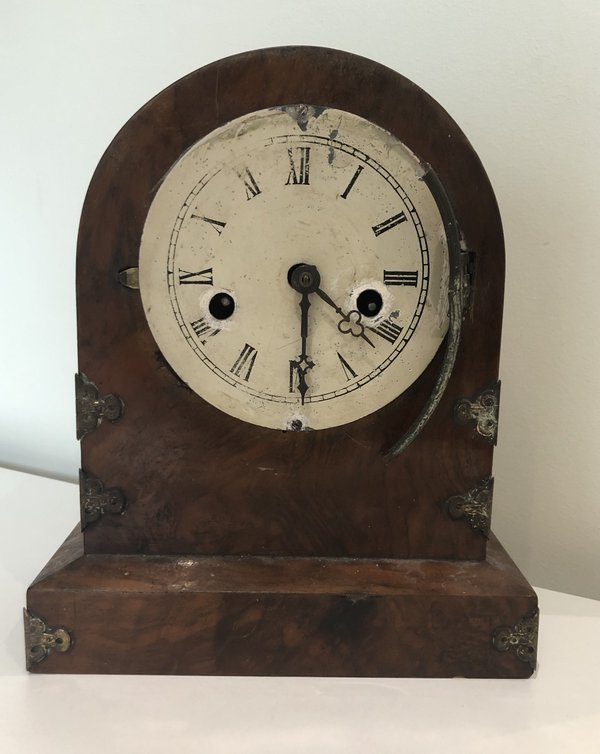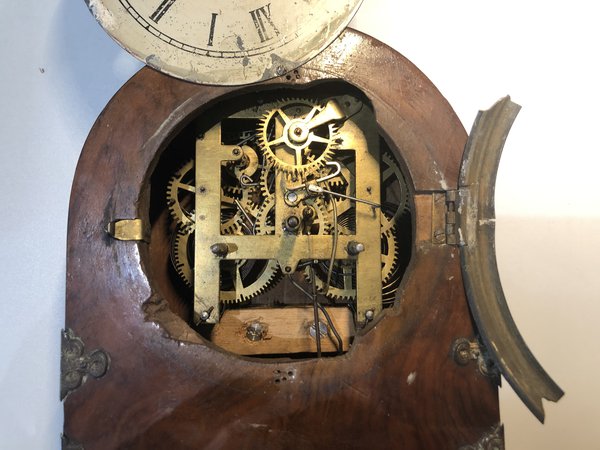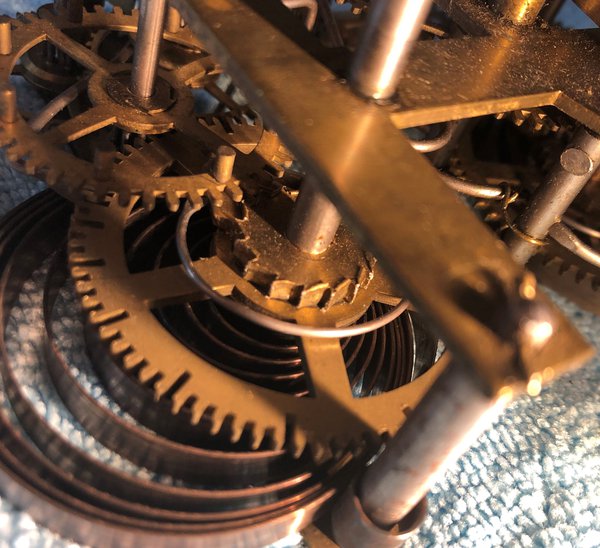Opening my first clock
This post was written by Alexandra Verejanu
I'm a 1st year student at Birmingham City University, studying for a BA in Horology. In the context of the lockdown I got pretty behind in my studies as we couldn’t go into the workshop. As I knew it would be helpful to see and touch a mechanism, I decided to buy some cheap old clocks. The clock I have 'played' with brought some interesting questions to my attention.

Firstly, I couldn’t take it out of the case, probably because it didn't seem to have been made to be serviced. I might have stumbled upon one of those old American clocks which were made to look fashionable in the house, but after a few years were discarded as uneconomical to repair. .
I looked closely and it was obvious someone has taken it out of its glued case using some aggressive methods, like bending the bell rod and cutting holes in the case. After two hours of struggling to carefully remove the mechanism from the case, I bent the bell rod and took it out.

Then, I examined the mechanism which was very oily. I knew excessive lubrication can do more harm than good, but I didn’t expect to see damage with the naked eye.
In the future I intend to change the damaged pieces, hopefully with some I will produce in the school workshop.


I decided not to take apart the mechanism just yet, as it was useful as a comparative item to the clocks I was presented with during online courses.
Considering this timepiece is not in its best shape, I might try to do some case work during the summer. I will not be able to fix the cuttings, but I’ll give it a good clean and maybe turn the case into an easy to open one.
This clock was very helpful during lockdown and helped me understand the mechanics of a clock. It truly helped me connect and mesh information from various sources which I was not able to understand.
Special thanks to my teacher Mathew Porton, for taking his time to answer all my questions and making sure I will be safe when I disassemble the mechanism and work on it.